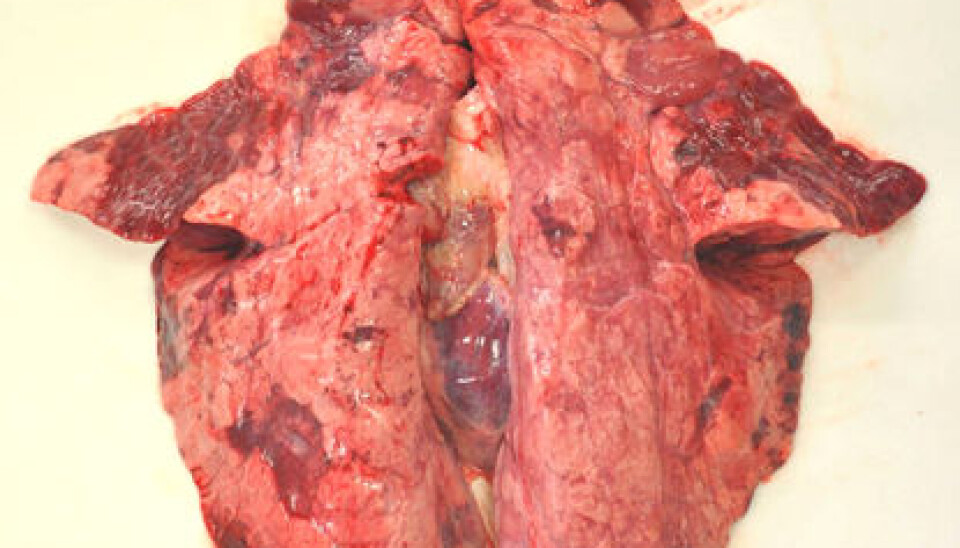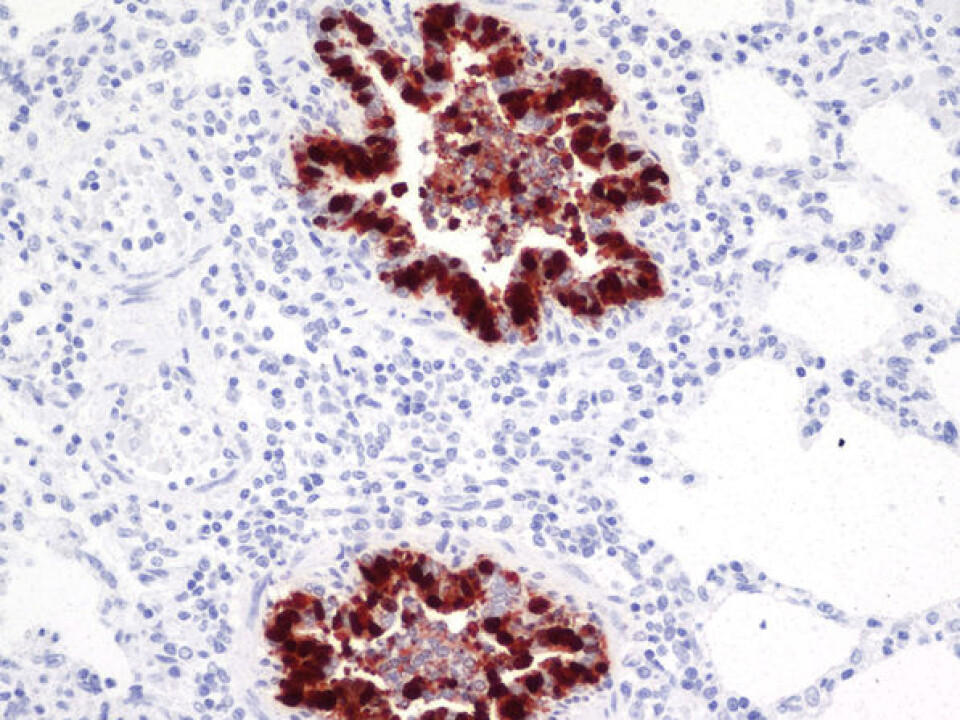This article was produced and financed by The Norwegian Veterinary Institute

Sick pigs give insight on swine flu
Pigs react to swine flu like humans. This makes them usefuel in experiments which will find out how the virus attacks the respiratory tract in humans.
Denne artikkelen er over ti år gammel og kan inneholde utdatert informasjon.
While other types of flu usually cause serious disease in elderly and sick people, the so-called swine flu can also affect young and healthy people severely. The reason may be that the swine flu virus infects cells in the lungs, while other influenza viruses primarily infect cells of the upper respiratory tract.
This year there are three different influenza viruses circulating in humans in Norway, influenza B, influenza A (H3N2) and influenza A (H1N1) pdm09 also called "swine flu”.
There are many studies on what happens in the blood of people with flu, but less is known about what happens in the lungs. Since it is difficult to take samples from internal organs of living people, one must make use of animal models.
Anatomically similar

The airways of pigs are anatomically similar to the human respiratory tract, and the immune system in the lung reacts very similar in pigs and humans.
Researchers from the Norwegian Veterinary Institute and Norwegian School of Veterinary Science, have in collaboration with a British research team, carried out experiments where healthy pigs were infected with swine flu virus in order to study how the immune system responds to infection.
"Our results confirm that pigs are good models for studying the development of the infection in humans. We see that the composition of cells in the blood of pigs is changing in the same way as we see in people who are infected with swine flu," says Hilde Forberg, who is a research fellow at the Norwegian Veterinary Institute.
"We have studied the "Natural Killer Cells" that are thought to be important in the first line of defensein the early stages of an swine flu infection. We found that the Natural Killer Cells are recruited to the lungs from the blood. If this is the case for all types of influenza we do not know, but there is reason to believe that this is a general mechanism of influenza infections."

Developing effective vaccines
"We also see that this flu virus causes a serious lung infection in pigs already one day after they have been infected. This may help to explain why the swine flu can cause severe respiratory illness in otherwise healthy people. It is important to understand as much as possible of what happens in an individual who is infected with influenza, both to provide appropriate treatment and to develop effective vaccines," says Forberg.
"In addition to the study of immune responses in the lung, researchers at the Norwegian Veterinary Institute are following the development of the swine flu virus in Norwegian pigs. We hope to bring in more material from pigs that are sick, and positive samples will be examined to see if the virus has changed and adapted to pigs," says the researcher.
































